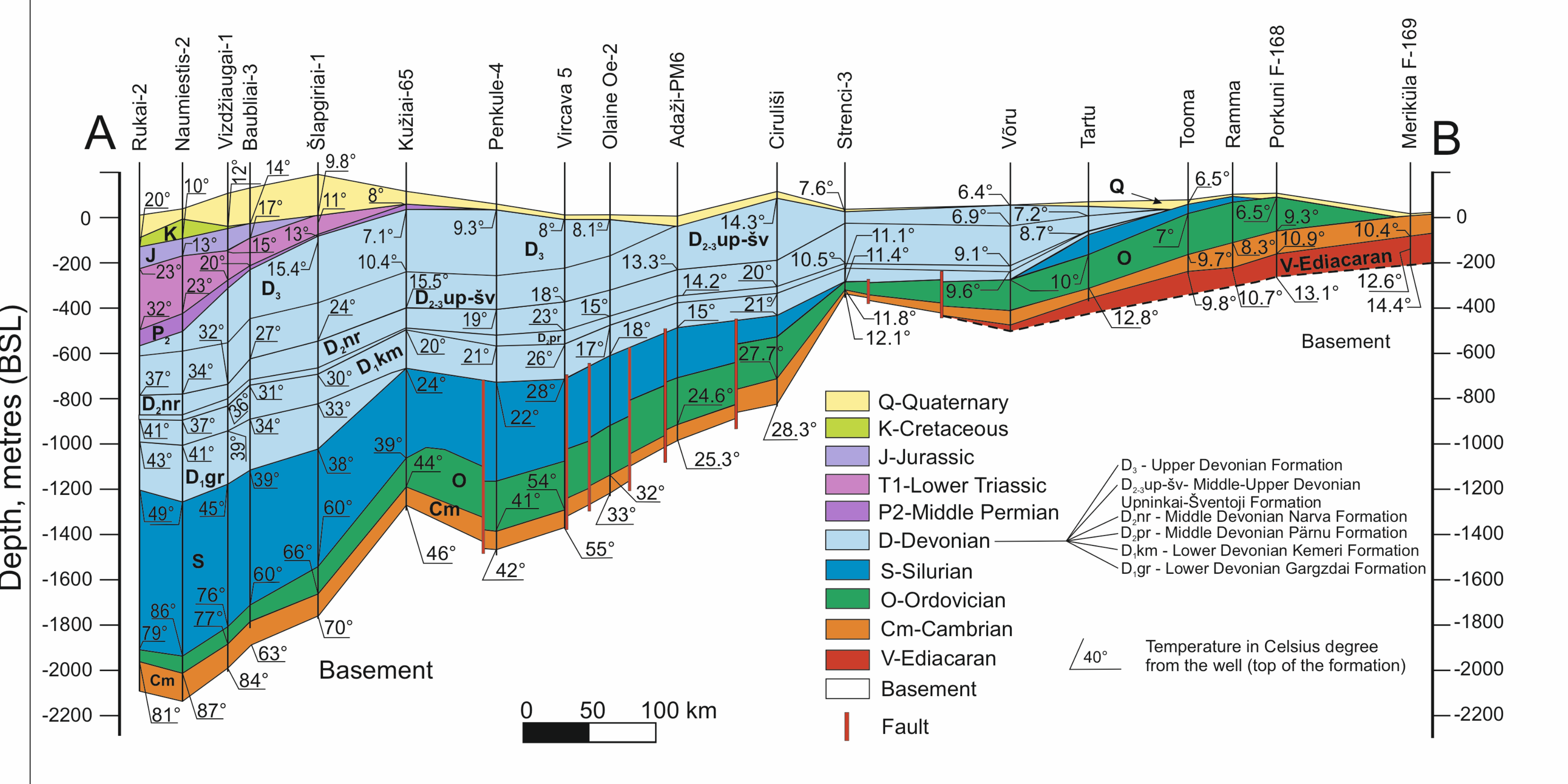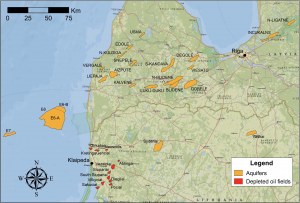Utilization of Geothermal Energy: New Possibilities for District Heating Networks in the Baltic States
Authors: Aleksandrs Zajacs a,*, Alla Shogenova b c, Kazbulat Shogenov b c, Anna Volkova d, Saulius Sliaupa e, Rasa Sliaupiene e, Argo Jõeleht f
Affiliations:
- a Institute or Sustainable Building Materials and Engineering Systems, Riga Technical University, Kipsalas str. 6a – 535, LV-1048, Riga, Latvia
- b Tallinn University of Technology, Department of Geology, Estonia
- c SHOGenergy, Tallinn, Estonia
- d Tallinn University of Technology, Department of Energy Technology, Estonia
- e Nature Research Center, Vilnius, Lithuania
- f University of Tartu, Institute of Ecology and Earth Sciences, Department of Geology, Estonia
- * Authors to whom correspondence should be addressed
Publisher: Renewable Energy, Volume 242, 1 April 2025, 122375
DOI: https://doi.org/10.1016/j.renene.2025.122375
Suggested citation: Zajacs, A., Shogenova, A., Shogenov, K., Volkova, A., Sliaupa, S., Sliaupiene, R., Jõeleht, A. (2025) Utilization of geothermal energy: New possibilities for district heating networks in the Baltic states. Renewable Energy. Volume 242, 122375, ISSN 0960-1481, https://doi.org/10.1016/j.renene.2025.122375.
Summary
The Baltic states are among those countries, where the geothermal potential is underestimated and/or not included in the National Energy and Climate Plans by 2030. Insufficient consideration of this potential hinders the development of geothermal technology and poses a challenge to achieving carbon-neutrality goals. While in the Baltic States more than half of heat demand is covered by district heating (DH) systems, energy generation is based on combined heat and power plants (CHPs) and boilers, consuming both biomass and fossil fuels. According to the ambitious national energy plans and targets, it is envisaged to increase the share of renewables in heat production. However, the existing energy policies overlook geothermal energy as one of the potential options.
Baltic Artesian Basin (BAB) is characterised by a low geothermal gradient, with some anomalies identified at greater depth in central and southwestern Latvia, as well as in the middle and western parts of Lithuania in the Cambrian Deimena, Devonian Pärnu-Kemeri and Šventoji-Upninkai sandy reservoirs aquifers. The main goals of this article are to provide a first comprehensive overview of three Baltic countries – Lithuania, Latvia and Estonia and to map perspective areas, where existing district heating (DH) systems are located within geothermal anomalies. The outcomes of this study provide an open-access information source for consideration and future evaluation of the potential for integration of geothermal energy into the existing DH systems and future DH and cooling systems. Developed maps and compiled data sources are intended to serve as tools for policymakers, investors and other stakeholders. These resources facilitate the viability assessment and explore possible pathways for integrating geothermal energy into DH and cooling networks.
Figure 2 Geothermal cross-section along line AB. Temperatures at the top of the Cambrian reservoir are indicated in the wells.




